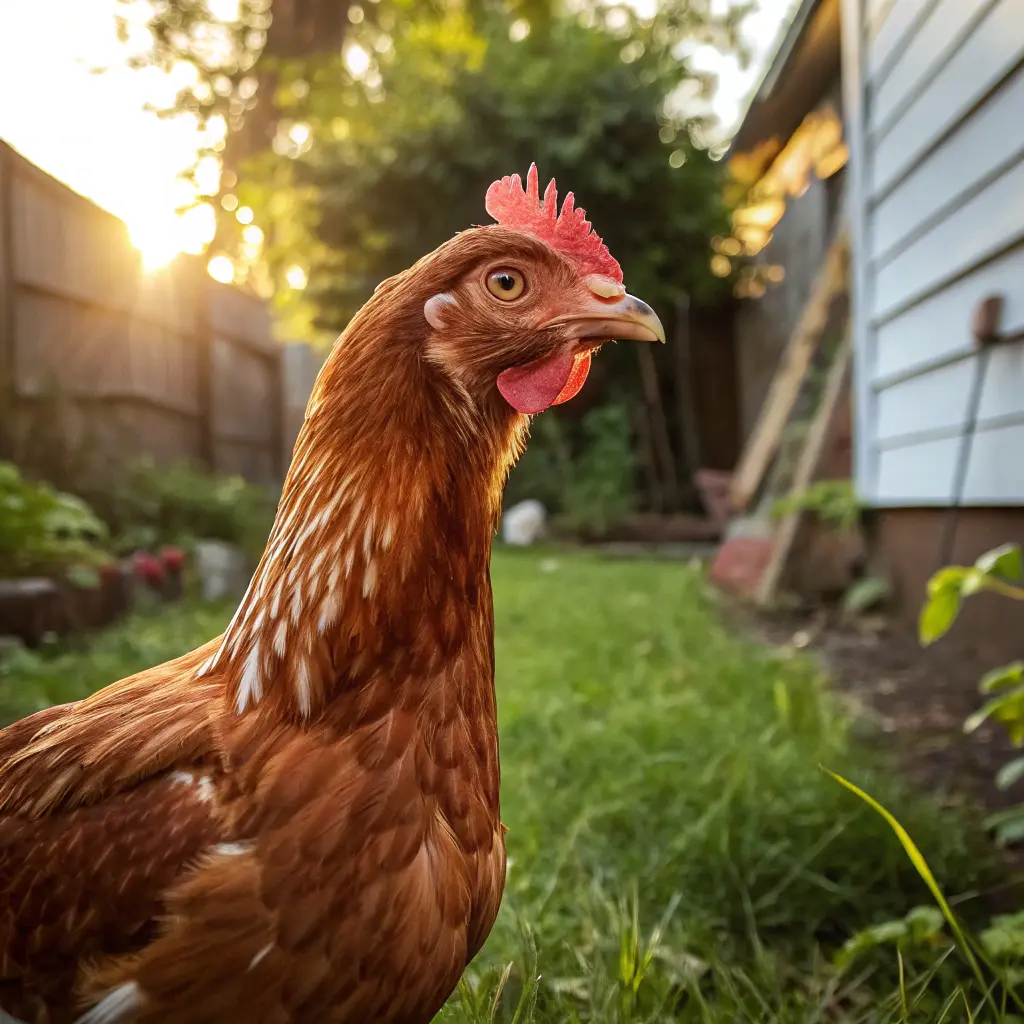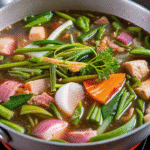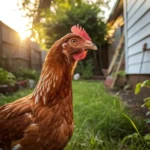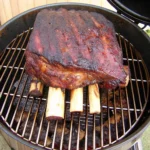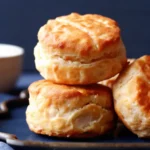The Cinnamon Queen chicken is one of the most popular and reliable hybrid breeds for backyard poultry enthusiasts in the U.S. Known for its exceptional egg-laying ability, early maturity, and friendly personality, this bird is often the go-to choice for both beginner and seasoned chicken keepers. Whether you’re building your first flock or expanding a small homestead, the Cinnamon Queen offers the perfect blend of productivity and manageability.
In this comprehensive guide, you’ll discover everything you need to know about Cinnamon Queen chickens—from their unique physical characteristics to how many eggs they lay, and how they compare to similar breeds like the Golden Comet. We’ll also cover essential tips for raising them right, what kind of eggs they produce, and where to buy them.
Don’t miss our Easy Weeknight Dinner Recipes For Families: Delicious, Quick, And Kid-Friendly Meals to pair with your fresh backyard eggs.
Table of Contents
PART 1: What Is a Cinnamon Queen Chicken?
Understanding the Cinnamon Queen Hybrid Breed
The Cinnamon Queen chicken is a modern sex-linked hybrid breed developed for high-performance egg production and early maturity. It is the result of a deliberate cross between a Rhode Island Red rooster and a Rhode Island White hen, combining the best traits of both parent lines to create a fast-growing, hardy, and prolific layer.
This breed is especially appealing to backyard chicken keepers because the chicks are sex-linked, meaning you can determine their gender right after hatching based on their color—females hatch with a reddish tint, while males are paler. This saves time, space, and feed, particularly for those who only want hens.
Most Cinnamon Queens start laying eggs as early as 16 to 18 weeks old, a trait that places them ahead of many traditional heritage breeds. They’re bred specifically for:
- Consistent, high-volume egg laying
- Calm and docile temperament
- Early egg production and robust growth
Origins and Genetic Makeup of the Cinnamon Queen
Although not an officially recognized breed by the American Poultry Association, the Cinnamon Queen chicken was developed with utility in mind. This hybrid was designed to meet the demand for a reliable, high-yield layer that performs well in both rural and urban backyard settings.
The Rhode Island Red contributes to the Cinnamon Queen’s robust health, deep reddish feathers, and egg-laying stamina. Meanwhile, the Rhode Island White adds contrast in coloration and enhances the sex-linked gene trait. This blend results in offspring with:
- Excellent feed-to-egg conversion
- Strong immune systems
- Greater resilience in both cold and warm climates
Because they are hybrids, Cinnamon Queens will not breed true, meaning their offspring may not retain the same desirable traits. However, they’re a top choice if your priority is egg production over breeding or exhibition.
PART 2: Appearance and Unique Traits
Coloration, Size, and Comb Type
One of the standout features of the Cinnamon Queen chicken is its beautiful feather coloring. Adult hens typically display a warm cinnamon or light reddish-brown plumage, often dusted with white or cream highlights across the wings and tail. Roosters, on the other hand, are usually lighter in color and may resemble their Rhode Island White lineage more closely, with soft buff to white feathers.
This hybrid falls into the medium-sized category, with hens weighing between 5 to 6 pounds on average and roosters ranging from 6 to 7 pounds. Their moderate size makes them easy to manage in smaller backyard coops, and their lighter frame supports better egg-laying efficiency.
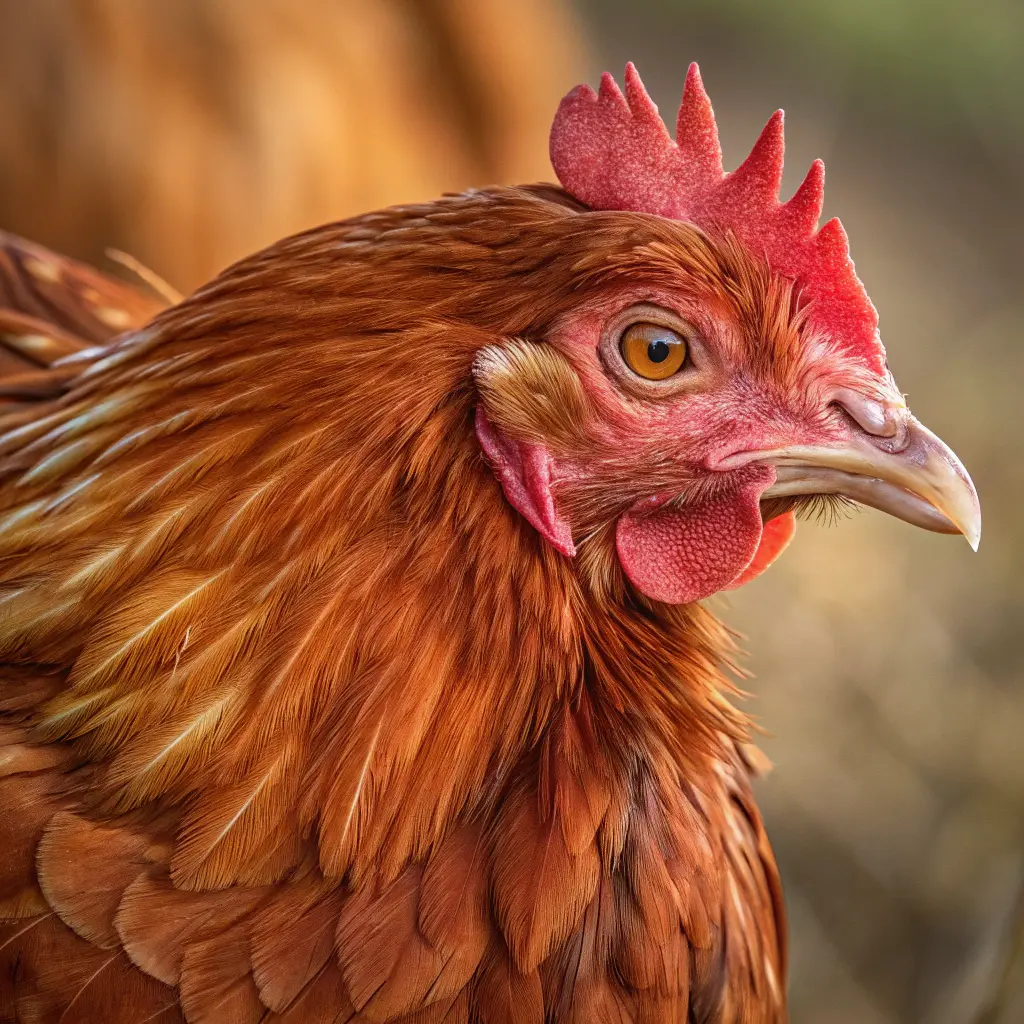
In terms of physical traits:
- Comb Type: Single comb, which can be prone to frostbite in colder climates, so winter care is important.
- Wattles and Earlobes: Bright red and moderately sized.
- Eye Color: Reddish-bay, alert, and expressive.
- Legs: Clean and yellow, without feathers.
Their feathering is sleek and dense, offering moderate cold weather tolerance. However, they’ll still need appropriate coop insulation in extreme weather regions.
Temperament and Personality in Backyard Flocks
The Cinnamon Queen chicken is widely praised for its gentle and friendly demeanor. This breed is especially ideal for families, including households with children, because of its low-aggression personality. They rarely pick fights with other flock members and tend to get along well in mixed flocks.
Here’s what makes their temperament stand out:
- Docile and Calm: They’re not flighty or skittish, making them easy to handle and interact with.
- Curious but Respectful: These hens enjoy exploring the yard but are not known to wander far or escape fencing.
- Quiet Layers: They tend to be quieter than many heritage breeds, which is great for urban chicken keepers.
Additionally, Cinnamon Queens are relatively low-maintenance, adapting well to various climates and coop styles. They’re not broody, meaning they rarely try to sit on eggs—which helps ensure consistent egg collection.
Discover great ideas like Cheesy Smoked Sausage and Potatoes Skillet that work perfectly with fresh eggs for breakfast or dinner.
PART 3: Egg Production Capabilities
What Color Eggs Does a Cinnamon Queen Hen Lay?
If you’re raising chickens for eggs, you’ll be thrilled with what the Cinnamon Queen chicken brings to the table—literally. This hybrid breed lays large to extra-large brown eggs, often with a warm, deep tint that’s a hallmark of quality and nutrition. The color can range from light tan to medium brown, with some slight speckling depending on the individual hen’s genetics.
The egg color remains fairly consistent throughout her laying cycle, which is another benefit over some other breeds whose eggs may fade or change shade over time. These rich brown eggs are highly desirable for their:
- Shell strength
- Rich yolk color
- Clean, uniform appearance
Whether you’re selling at a farmers’ market or simply feeding your family, the Cinnamon Queen’s egg color and size will not disappoint.
How Often Do Cinnamon Queens Lay Eggs?
The Cinnamon Queen chicken is among the top-performing layers in the poultry world. These birds are built for egg production—period. A healthy hen can lay 250 to 300 eggs per year, especially in her first 2 years of production. That’s roughly 5 to 6 eggs per week, placing her alongside or even above prolific breeds like the ISA Brown or Golden Comet.
Here’s a breakdown of their typical laying performance:
| Age Range | Average Eggs/Year | Egg Size | Egg Color |
|---|---|---|---|
| 5–12 months | 280–300 eggs | Large/Extra-Large | Light to medium brown |
| 13–24 months | 220–260 eggs | Large | Medium brown |
| After 24 months | 180–220 eggs | Large | Lighter brown |
Key factors that influence their egg-laying consistency include:
- Nutrition: Balanced layer feed, calcium, and clean water.
- Lighting: At least 14 hours of light per day during shorter winter months.
- Stress and Housing: Calm environments yield better laying rates.
Unlike some heritage breeds, Cinnamon Queens begin laying as early as 16–18 weeks, which gives you a faster return on investment in terms of feed and care.
Also worth noting: While they are year-round layers, their peak is in their first two years. Production may decline slightly after year three, but they’ll still lay regularly if kept healthy.
Learn more about How to Cook Frozen Biscuits in Air Fryer: The Ultimate Guide for Perfect Results to enjoy with your farm-fresh brown eggs.
PART 4: Cinnamon Queen Chicken vs Golden Comet
Are Cinnamon Queen Chickens the Same as Golden Comets?
The Cinnamon Queen chicken and the Golden Comet are often mistaken for each other—and for good reason. Both are sex-linked hybrid layers bred for high egg production and early maturity. However, despite their similarities, they are not the same breed.
The main differences come down to parent stock, feather color, and slight variations in productivity. Here’s how they stack up:
| Feature | Cinnamon Queen Chicken | Golden Comet |
|---|---|---|
| Parent Breeds | Rhode Island Red x Rhode Island White | Rhode Island Red x White Leghorn |
| Feather Color | Cinnamon or light reddish-brown with white tips | Golden buff or light brown |
| Egg Color | Brown | Brown |
| Egg Production | 250–300 eggs/year | 280–320 eggs/year |
| Temperament | Docile, calm, friendly | Very docile, curious, affectionate |
| Broodiness | Rare | Very rare |
| Lifespan | 3–5 years (productive up to 2–3 years) | 4–6 years (productive up to 3 years) |
Though the Cinnamon Queen and Golden Comet look similar at a glance, their genetic makeup and subtle behavioral differences can influence your choice depending on your flock’s needs.
If you want a bird that’s slightly more cold-hardy and stocky, the Cinnamon Queen is a strong contender. On the other hand, the Golden Comet, thanks to its Leghorn genes, might give you slightly higher egg production and a lighter frame.
Comparing Egg Production and Lifespan
When it comes to egg laying, both breeds are considered elite performers. While the Golden Comet may edge out the Cinnamon Queen chicken by a small margin in total annual production, both will provide a nearly year-round supply of high-quality brown eggs.
Lifespan is another consideration. Hybrid chickens generally live 3–6 years, with the most productive laying years being the first 2 or 3. The Cinnamon Queen typically experiences a slight drop in production after age 2, while Golden Comets may maintain a steadier pace up to age 3 or 4, depending on health and conditions.
Also, keep in mind that neither breed is known for broodiness, making them better suited for egg collection rather than natural reproduction.
Check out Beef Plate Ribs: The Ultimate Guide To Flavorful, Fall-Off-The-Bone Perfection for a meaty pairing to complement your home-farmed eggs.
PART 5: Raising Cinnamon Queen Chickens
Best Practices for Housing and Feeding
Raising a Cinnamon Queen chicken doesn’t require an advanced degree in animal science—but it does call for some thoughtful planning. These birds are low-maintenance by design, but like all backyard chickens, they thrive best with proper shelter, space, and nutrition.
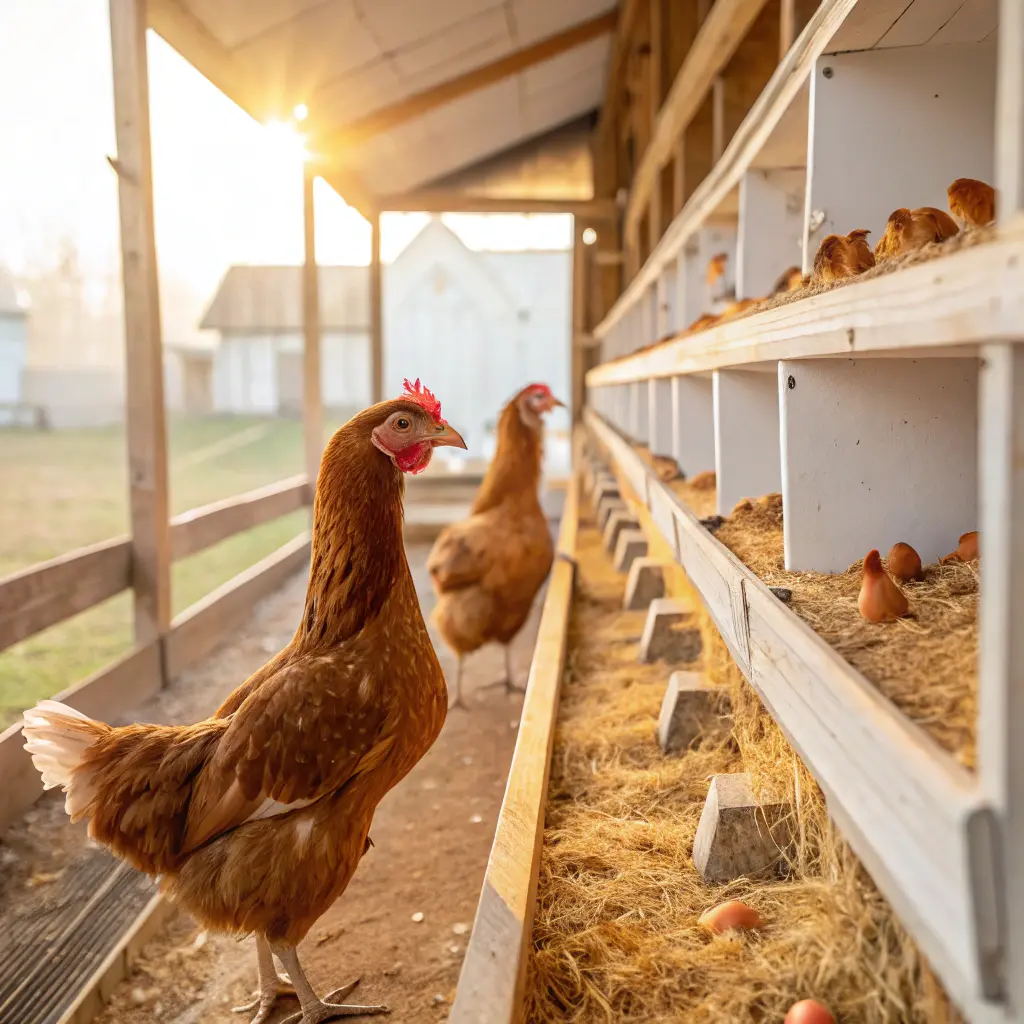
Here’s a breakdown of essential housing needs:
- Space: Each Cinnamon Queen needs at least 4 square feet inside the coop and 8–10 square feet in the run.
- Ventilation: Proper airflow prevents moisture buildup and respiratory issues. Install screened windows or vents.
- Nesting Boxes: Provide one nesting box per 3 hens, filled with soft bedding like straw or pine shavings.
- Roosts: They prefer to perch at night, so include roosting bars 1.5–2 feet off the ground.
For feeding:
- Starter Feed: Chicks need high-protein (20–22%) starter feed until about 6 weeks old.
- Grower Feed: Switch to grower feed (16–18% protein) from 6 to 18 weeks.
- Layer Feed: Once they start laying, transition to layer feed with added calcium and 16% protein.
- Scratch & Treats: Offer occasional treats like scratch grains, fruits, and mealworms—but limit to 10% of total diet.
Clean, fresh water must be available at all times—especially during the heat of summer or when supplementing with dry feeds.
Tips for Raising Healthy Cinnamon Queen Pullets
If you’re starting with pullets (young hens around 8–16 weeks), you’re already ahead in terms of egg production timelines. These are some best practices to ensure your Cinnamon Queen chicken grows into a healthy, productive layer:
- Quarantine New Birds: Always isolate new arrivals for 2 weeks to prevent the spread of disease.
- Vaccination: Many hatcheries vaccinate for Marek’s disease; confirm this before purchasing.
- Lighting Schedule: Maintain 14–16 hours of light once they near laying age to encourage production.
- Dust Bath Areas: Provide dry, loose soil or sand with a bit of diatomaceous earth to help prevent mites and lice.
- Winter Prep: Insulate your coop and prevent drafts, but allow for ventilation. Protect combs from frostbite with a thin layer of Vaseline in freezing temperatures.
These birds are hardy and adaptable, but a little prevention goes a long way. When cared for properly, a Cinnamon Queen pullet will reward you with months—and even years—of consistent egg production.
Looking for inspiration? Try Vegan Main Course Recipes For Beginners: A Flavorful Journey Into Plant-Based Cooking to balance your protein sources.
PART 6: Health and Longevity
Common Health Issues to Watch For
While the Cinnamon Queen chicken is known for its hybrid vigor and resilience, no chicken is entirely free from health concerns. These birds are generally robust, but they can still face a few common poultry ailments—especially in backyard settings where biosecurity might not be as tight as commercial operations.
Here are the top health concerns to keep an eye on:
- Reproductive Exhaustion: Due to their intense egg-laying cycle, Cinnamon Queens may suffer from reproductive system fatigue or prolapse, especially after age two.
- Calcium Deficiency: High production demands can lead to brittle eggshells or internal laying if calcium intake isn’t adequate. Offer crushed oyster shells or a calcium supplement.
- Vent Gleet: A fungal infection causing a dirty or irritated vent area. Keep their nesting areas clean and dry to avoid this.
- Egg Binding: These hens are more susceptible due to the large size of their eggs. Warm baths and calcium-rich treats can help prevent this.
- External Parasites: Mites and lice are common in outdoor flocks. Dust baths and routine coop cleaning can help prevent infestations.
- Coccidiosis: More common in chicks and pullets. Ensure feeders and drinkers are raised off the ground and clean regularly.
Routine observation is your best health tool. A healthy Cinnamon Queen will have bright eyes, a firm stance, clean feathers, and a vibrant red comb.
Life Expectancy of a Cinnamon Queen Chicken
On average, the Cinnamon Queen chicken lives 3 to 5 years, with some hens reaching 6 years or more under ideal conditions. However, their most productive egg-laying years are typically the first 2 to 3 years. After this period, their egg output naturally declines, although many hens continue to lay a few eggs weekly well into their later years.
Here’s a rough timeline for their productivity and longevity:
| Age | Egg Production | Health Focus |
|---|---|---|
| 0–6 months | Not yet laying | Growth, vaccinations |
| 6–24 months | Peak laying (250–300/year) | Nutrition, parasite control |
| 2–3 years | Decline begins | Reproductive health |
| 3–5 years | Sporadic layers | Comfort and senior care |
Some flock owners choose to retire their Cinnamon Queens to a more relaxed lifestyle after year three, allowing them to live out their natural lives in comfort.
Overall, these chickens are low-maintenance and high-return birds—but they do best with consistent care, balanced nutrition, and a clean living environment.
PART 7: Pros and Cons of Owning Cinnamon Queens
Top Benefits for Backyard Chicken Keepers
There are many reasons why the Cinnamon Queen chicken is a favorite among homesteaders, urban farmers, and first-time flock owners. This hybrid was bred with practicality in mind—and it delivers.
Here’s why they’re a great addition to any flock:
- Exceptional Egg Production: With up to 300 large brown eggs per year, Cinnamon Queens rival or exceed the output of most commercial layers.
- Early Maturity: These hens start laying as early as 16–18 weeks, offering a quicker return on investment in feed and care.
- Docile Temperament: Their calm, friendly nature makes them great for families, including those with young children.
- Cold and Heat Tolerance: Thanks to hybrid vigor, they adapt well to a variety of climates when properly sheltered.
- Low Broodiness: These hens rarely go broody, which means you can count on consistent laying without interruption.
- Sex-Linked Genetics: Makes chick sexing easier at hatch, reducing the risk of unwanted roosters in your flock.
If you’re looking for an easy-to-care-for, high-output layer, the Cinnamon Queen checks all the boxes.
Potential Drawbacks and Considerations
While the Cinnamon Queen chicken brings a lot to the table, there are a few trade-offs to consider—especially if your goals extend beyond egg collection.
Here are the main limitations:
- Shorter Lifespan of Productivity: They lay heavily for the first 2–3 years but taper off quickly after that. If longevity is a concern, heritage breeds might be better.
- Hybrid Limitations: Since they’re crossbred, their offspring won’t breed true. Breeding Cinnamon Queens yourself won’t guarantee the same traits.
- Higher Feed Demand: High egg output requires a steady, nutrient-dense feed, which can raise costs slightly compared to moderate layers.
- Single Comb Vulnerability: Their large combs are prone to frostbite in freezing climates unless adequately protected.
- Reproductive Strain: Intense laying can lead to health issues like egg binding or prolapse in later years.
In short, Cinnamon Queen chickens are best suited for those prioritizing egg production over breeding or showmanship. They’re workhorses, not peacocks—and they perform best with attentive care and a good diet.
Don’t miss our Healthy Salad Recipes With Protein: A Comprehensive Guide To Nutritious, Delicious Meals—a perfect match for your daily egg harvest.
PART 8: Where to Buy Cinnamon Queen Chickens
Trusted Hatcheries and Breeders in the USA
If you’re ready to bring the Cinnamon Queen chicken into your backyard flock, you’ll be happy to know they’re widely available across the United States. Many trusted hatcheries specialize in this hybrid breed, offering both chicks and pullets shipped directly to your door—or available for local pickup.
Here are some of the most reputable U.S. hatcheries that carry Cinnamon Queens:
| Hatchery Name | Location | Offerings | Website |
|---|---|---|---|
| Meyer Hatchery | Ohio | Chicks, Pullets, Hatching Eggs | meyerhatchery.com |
| Hoover’s Hatchery | Iowa | Day-Old Chicks | hoovershatchery.com |
| Cackle Hatchery | Missouri | Chicks, Started Pullets | cacklehatchery.com |
| Tractor Supply (partners with hatcheries) | Nationwide | Seasonal Chick Sales | tractorsupply.com |
When ordering, keep these tips in mind:
- Buy early in the season (February–May) for the widest selection.
- Look for NPIP certification (National Poultry Improvement Plan) to ensure disease-free birds.
- Check for minimum order sizes if you’re ordering chicks (some hatcheries require 6–15 minimum).
- Choose overnight shipping for chicks if possible to reduce travel stress.
Buying from a local farm or poultry swap? Always ask about parentage, vaccination status, and health guarantees.
Choosing Between Chicks, Pullets, or Hatching Eggs
Not sure what form of Cinnamon Queen to get? Here’s a breakdown to help guide your decision:
| Type | Best For | Pros | Cons |
|---|---|---|---|
| Day-Old Chicks | Beginners with brooder setup | Cheapest, fun to raise from scratch | Need heat source, higher risk |
| Started Pullets | Quick egg production (8–16 weeks old) | Skip chick stage, lay sooner | More expensive per bird |
| Hatching Eggs | Experienced keepers with incubator | Full control over incubation process | Unreliable hatch rate, time-intensive |
For most backyard keepers, started pullets offer the best of both worlds: lower mortality risk, faster production, and less time spent under a heat lamp.
Learn more about Quick Meal-Prep Salads For Work Lunch: Delicious, Healthy, And Time-Saving Ideas to pair with your Cinnamon Queen’s egg bounty.
PART 9: Cinnamon Queen Chicken FAQs
What Color Eggs Does a Cinnamon Queen Hen Lay?
A Cinnamon Queen chicken lays large to extra-large brown eggs, typically medium to dark in tone. Some eggs may have a slight speckle, but overall, they are uniform and strong-shelled—perfect for daily use in the kitchen or local egg sales.
Are Cinnamon Queen Chickens Good Layers?
Yes, they are among the best egg-laying breeds available. Cinnamon Queen hens can produce 250 to 300 eggs per year, especially during their first two laying years. They start laying early—often by 16 to 18 weeks of age—and are consistent performers with minimal broodiness.
What Are the Characteristics of a Cinnamon Queen Chicken?
Cinnamon Queens are medium-sized hybrid hens with cinnamon or light reddish-brown feathers. They have a single comb, yellow legs, and red wattles. Known for their calm temperament, they are easy to handle, kid-friendly, and well-suited for both rural and suburban backyard coops.
Are Cinnamon Queen Chickens the Same as Golden Comet?
No, although they’re often confused due to similar purposes and appearances, they are not the same breed. Cinnamon Queens are typically a cross between Rhode Island Red roosters and Rhode Island White hens, while Golden Comets usually come from Rhode Island Red and White Leghorn crosses. Both are excellent layers, but they differ slightly in temperament, egg count, and feather color.
Looking for more comfort food ideas? Try our The Ultimate Guide To Making Chicken Noodle Soup From Scratch, perfect with fresh farm eggs and garden produce.
Conclusion: Is the Cinnamon Queen Chicken Right for You?
If you’re searching for a reliable, friendly, and productive backyard bird, the Cinnamon Queen chicken is one of the best choices out there. With high egg output, early maturity, and minimal maintenance needs, it’s ideal for beginners and seasoned chicken keepers alike. Whether you’re looking to feed your family with fresh, nutritious brown eggs or enjoy the rewarding experience of poultry keeping, this hybrid hen won’t disappoint.
While their laying lifespan is shorter than some heritage breeds, their upfront productivity more than makes up for it. Just give them proper care, nutrition, and a clean coop, and your Cinnamon Queens will be happy, healthy, and busy laying almost daily.
Check out How To Cook Frozen Biscuits In Air Fryer: The Ultimate Guide For Perfect Results to go with those fresh brown eggs from your backyard.

